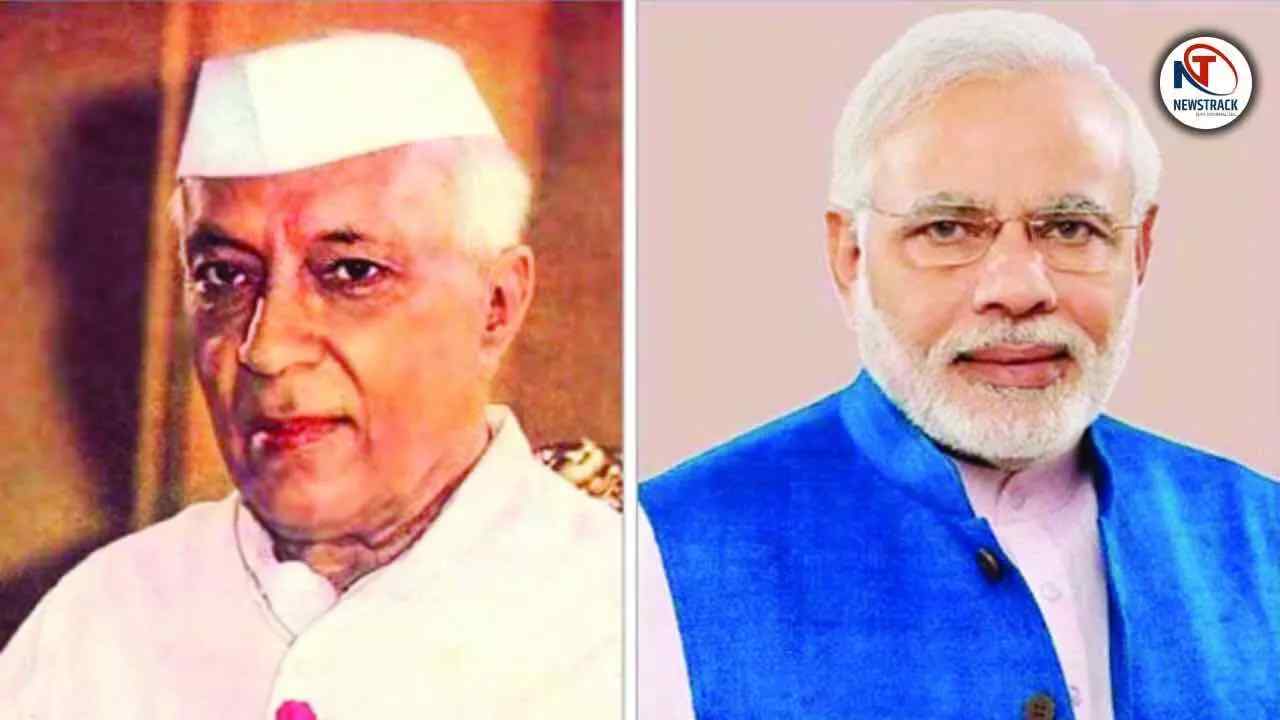Mangoes Add Sweetness to Diplomacy: There will hardly be any other fruit in the world that played such an important role in the diplomacy of South Asia as mangoes played. India, Pakistan, Bangladesh and even mango compartments with China and America have become a symbol of the warmth of relationships. Recently, 1,000 kg mangoes sent to Prime Minister Narendra Modi on behalf of Bangladesh’s interim government chief Mohammad Yunus have once again made the ‘Mango Diplomacy’ into the headlines. However, this latest step of Bangladesh also raises the question that whether this ‘mango diplomacy’ will really be able to bring warmth in India-Bangladesh relations again? Or it will also remain just a diplomatic etiquette like before? Let’s know in detail on this subject –
What is the message behind Bangladesh and common diplomacy
When Bangladesh’s interim government chief Mohammad Yunus sent a gift of mangoes at PM Modi’s residence this week, the message was clear that the initiative to reduce bitterness in Delhi and Dhaka’s relationship. However, before this, former Prime Minister Sheikh Hasina has been sending mangoes to PM Modi every year. Haribhanga of Rangpur sent to Sheikh Hasina and Amrapali mangoes of the monarchy not only reached the Prime Minister or President, but also to the Chief Ministers of the border states like West Bengal and Tripura. The diplomats of Bangladesh themselves have believed that mangoes are such a fruit that is liked in the entire subcontinent and it works in the entire subcontinent.
Geophysical analysts believe that Bangladesh is currently under pressure from the US due to trade pressure, Myanmar crisis and Middle East conditions. Therefore, he is trying to bring back relations with India again. Yunus’s ‘common gift’ is considered part of this attempt.
India’s old tradition- Diplomatic journey of mangoes started from Nehru era
Even today, stories of ‘Mango Diplomacy’ are in discussion in the world, but its roots are related to Nehru era in India. After Pandit Jawaharlal Nehru became Prime Minister, India started using mangoes as a cultural messenger to make diplomatic relations sweet.
In the 1950s, Nehru sent mangoes to many heads of state and leaders of the world. This was clear the message that India not only wants political relations, but also gives importance to cultural and human relations.
In the 1950s, Pandit Jawaharlal Nehru used to take mango baskets whenever he traveled abroad. During his visit to China in 1955, he gifted Prime Minister Chow Anlai as Dussehri and lame mango plants. Those who were installed at People’s Park in Guangzhou. Not only this, when Soviet leader Khrushchev came to India, he was also presented with baskets of Malihabadi Dushari mangoes of Uttar Pradesh. After this, this tradition also started appearing in relations with countries in Pakistan, Bangladesh and South Asia. The beginning of ‘sending mangoes as gifts’ to the Prime Ministers of India on behalf of Pakistan’s rulers is also considered in this period.
Stories related to mangoes of Rajiv Gandhi and US President Bush
In 1986, Rajiv Gandhi presented a box of Indian mangoes to the President during his visit to the Philippines, while in 2006, the US lifted the ban on Indian mangoes under the ‘Mango Initiative’ during the 2006 visit to George W. Bush. It is said that President Bush himself was crazy about the taste of Indian mangoes.
The effect of ‘mango diplomacy’ in Pakistan and China relations also
In 1968, Pakistan Foreign Minister Mian Arshad Hussain arrived at Beijing and presented mangoes to Chinese leader Maotse Tung. At that time, mangoes in China were a rare and almost unseen fruit. Instead of keeping these mangoes with them, Mao gifted to workers and revolutionary students.
A cultural revolution was going on in China and every Mao’s work was considered a ‘revolutionary message’. The mangoes were preserved in formaldehyde and displayed in factories, fields and labor organizations, so that people would worship it as ‘Mao’s blessings’.
Gradually the mangoes became the symbol of ‘Mao’s revolution’. Even in the Chinese society, the worship of mangoes, its idols and songs related to it also came into vogue. It is also known as Mango Cult i.e. ‘Common Pooja Movement’ in history, which is considered one of the strange events of cultural revolution.
Diplomatic messenger became common between India and Pakistan
In order to reduce the bitterness in relationships, many times between India and Pakistan have also been used as a diplomatic messenger. In 1981, the mangoes were provided between Pakistani President Zia-ul-Haq and Indira Gandhi in 1981. Then Pakistan sent a mango mango like ‘Anwar Rataul’, on which the debate broke out that its origin is related to UP and not Pakistan.
In 2001, Manmohan Singh presented Alphonso mangoes to his Pakistani counterpart Yusuf Raza Gilani after attending the SAARC conference in Pakistan, although his answer was not found immediately.
In August 2003, Parvez Musharraf (President) and Prime Minister Mir Zafarullah Khan Jaimali, Indian President A.P.J. Abdul Kalam and PM Atal Bihari Vajpayee sent them in general.
In 2008, Asif Ali Zardari sent a gift of mangoes to Manmohan Singh, but the same year the Mumbai attacks cooled the warmth of this gift.
In 2010, Pak Home Minister Rehman Malik gifted sweet mango packets to the Indian delegation and the media, which were sent across the border.
In September 2014, Nawaz Sharif sent a box Charusha and Sindhri common PM Narendra Modi, behind which there were reasons for reducing tension and the possibilities of UNGA New York Dialogue.
In 2015, Nawaz Sharif sent mangoes to Narendra Modi, Pranab Mukherjee and Sonia Gandhi, but did not have much impact on bilateral relations. In theory, Pakistan continues to exchange its best mango varieties – Sindhri, Chauusa, Anwar Rataul etc. as a diplomatic gift. It is considered as diplomatic habit.
Indian mango and export challenges
The more delicious Indians are, the more challenges they come in the way of preserving them. Around 1,200 varieties grow in India while 400 varieties in Pakistan. But in terms of exports, India faces challenges many times. According to common experts, most of the mangoes in India have less shelf life due to high fiber content and early deterioration. This is why the export of other varieties except Alphonso is very limited. At the same time, Sindoori, Chausa and Anwar Rataul varieties of Pakistan are more popular in the Western market due to long shelf life and have been successful in providing financial help to their country.
The Pakistani Embassy has also been organizing ‘mango parties’ in the US and has been following the tradition of sending mangoes to the senators and leaders there.
Struggle to hold Indian mangoes in China and America
In 2004, China opened its markets for Indian mangoes but Indian mangoes could not become very popular there. The US banned Indian mangoes for nearly two decades, which was removed in 2006 by the then President George W. Bush. After this, when the Indian mangoes reached America in 2007, the New York Times wrote that ‘the most awaited fruit delivery of history’.
Indians are famous for their taste and aroma worldwide, but it was not easy for India to make its strong presence in big markets like China and America. Business competition, strict import standard and political equations are a major reason behind this.
Long process of approval in america
There is a lot of demand for Indian mangoes, especially ‘Alphonso’ and ‘Saffron’ in America. But to enter there, it is necessary to cross the rigorous Quality of USDA (US Department of Agriculture) and cross -phytocenritary terms.
When the US first approved the import of Indian mangoes in 2007, the condition was laid that the radiation treatment of mangoes should be done in India. For this, special centers were set up in India, but its cost on production and exports was huge.
However, after Indian diplomatic efforts, the US has gradually given some exemption, but there is still a big challenge to compete with Mexico and Latin American countries, as their mangoes reach there in cheap and more quantities.
Politics more than taste in China
The Indian mango entry in the Chinese market was once again in 2017, when the initiative took place during Prime Minister Modi’s visit to China. China then agreed to import Indian mangoes as a trial. But since then there has not been a significant increase in business. There were two reasons for this –
1. Different taste preference of Chinese market, where they like light sour taste instead of sweet.
2. India-China border tension, which affected business relations.
Increasing efforts
After success in markets like Moscow, Tokyo and Dubai, India has now started promoting mangoes through fruit festivals, testing events and business summit in the US and China.
In 2024, India has intensified dialogue with American companies to reduce the radiation fee and softened in phytosanitory conditions. In China too, India has tried to strengthen the attendance through online marketing and B2B trade platforms.
Even though India has still not achieved fully desired success in the US and China, the mangoes of India are slowly putting foot in these markets due to diplomatic efforts and taste identification. The overseas Indian community in the US is maintaining its demand, while India in China will have to accept the challenge of presenting its mangoes according to the Chinese Tests.
Mango diplomacy a politics, relationship and market confluence
There is also a common major economic resource for South Asian countries, not just sweetness in relationships. India, Pakistan and Mexico are the most common export countries in the world. At the same time, Bangladesh is also included in the top ten. There is also a strict competition in the global market among them.
Mango in South Asia is not just a matter of taste, but is an important part of politics, diplomacy and market. Whether it is a relationship with China and the Soviet Union during Pandit Nehru era or business equation with Bangladesh and America in the Modi era has become synonymous with sweet messages in every round. Time changed, governments changed, but this Indian tradition of dissolving sweetness in relationships with ‘mango’ continues even today.










